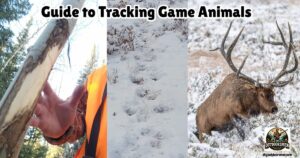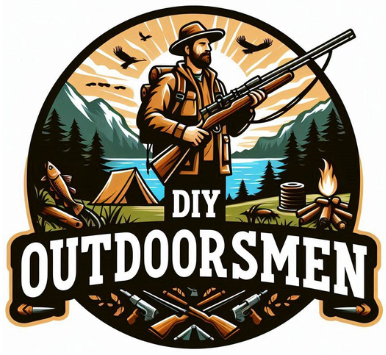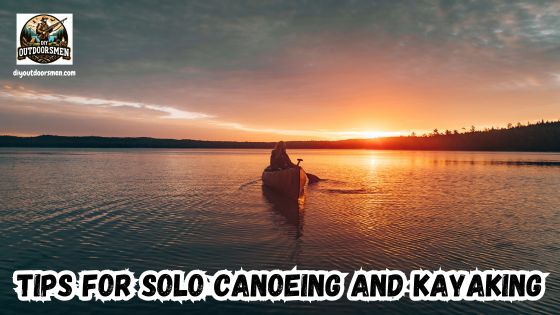Contents
- 1 Planning and Safety for Solo Canoeing and Kayaking Adventures
- 2 Equipment and Clothing for Canoeing and Kayaking
- 3 Paddling Techniques and Strategies
- 4 Once You’re On the Water
- 5 Additional Canoeing and Kayaking Tips and Tricks
- 6 Frequently Asked Questions About Solo Canoeing and Kayaking
- 6.0.1 What safety measures should I take before a solo paddling trip?
- 6.0.2 How can I improve my paddling techniques for better control and balance?
- 6.0.3 What equipment should I prioritize for solo trips?
- 6.0.4 How do I know if conditions are safe for a solo expedition?
- 6.0.5 What should I do if I encounter wildlife on my route?
- 7 Wrapping up on Solo Adventures
Solo canoeing and kayaking adventures offer a rewarding way to connect with nature and enjoy peaceful moments on the water. My experience with these activities has taught me that careful planning and the right preparation can lead to a safe and enjoyable adventure.
QUICK LOOK: Tips for Solo Canoeing and Kayaking
- Share Your Itinerary: Inform someone of your route, expected return time, and your emergency contact plan.
- Weather Check: Continuously monitor the weather to avoid being caught off guard by sudden storms or changes in wind direction.
- Emergency Equipment: Keep essentials in waterproof cases to prepare for unexpected events on the water.
- Personal Flotation Device (PFD): Always wear your PFD to guarantee maximum safety on the water.
- Paddle Float and Pump: Keep these tools handy for self-rescue and re-entry if your craft capsizes.
- Dressing for Immersion: Select clothing that retains warmth and dries quickly, especially in cold conditions.
- Waterproof Communication Devices: Use cases or choose devices specifically designed for wet environments. Consider devices that help you communicate even in remote areas.
- Spare Paddle: Always carry a backup paddle to reduce the risk of disruptions during your trip.
- Navigation Tools: Use waterproof maps or GPS devices to keep track of your journey and find your way in unfamiliar areas.
- Learn Self-Rescue Techniques: Regular practice of re-entry and effective water egress procedures is essential.
- Hydration and Nutrition: Carry sufficient water and nutritious snacks to keep your energy levels steady throughout your trip.
In this article, I share my tips for planning your trip, choosing the right gear, perfecting your paddling techniques, and handling unexpected challenges on the water when canoeing or kayaking.
Planning and Safety for Solo Canoeing and Kayaking Adventures
Planning your solo canoe or kayaking trip is the first very important step to ensure both safety and enjoyment. Before setting out, I always share my itinerary with someone I trust. I let them know where I am going, when I expect to return, and what steps to take if I do not come back as planned.
Checking the weather is also key. I monitor weather forecasts closely in the days leading up to my trip and even during the outing. Weather conditions can change quickly on open water, and being informed helps me decide if I need to cut the trip short or postpone altogether.
It is wise to have an emergency plan in place. I carry a satellite communicator such as a SPOT or InReach device to alert emergency services if needed. Along with this, I equip myself with a small supply pack that contains essentials like an emergency blanket, matches, a knife, and some food. This pack is stored in a waterproof case on my boat, ensuring that I have these items readily available.
As an extra safety measure, I also prepare a ditch kit. This kit includes a whistle, another compact knife, fire starter tools, and a basic first aid kit. Keeping these items within reach is a precaution I take so that I am ready to leave the boat quickly in an emergency.
- Share Your Itinerary: Inform someone of your route, expected return time, and your emergency contact plan.
- Weather Check: Continuously monitor the weather to avoid being caught off guard by sudden storms or changes in wind direction.
- Emergency Equipment: Keep essentials in waterproof cases to prepare for unexpected events on the water.
- Satellite Communicator: Consider devices that help you communicate even in remote areas.
Additional planning considerations are also very important. I always take the time to study tide charts, local marine advisories, and any applicable regulations that might affect my route. Checking if permits are necessary in certain areas or being aware of seasonal restrictions adds an extra layer of preparation.
This extra research makes it easier to focus on the beauty of the water while being well prepared for any event that might occur during my solo adventure.
Equipment and Clothing for Canoeing and Kayaking
Choosing the right equipment can make a huge difference in the success and safety of your adventure. I always wear a personal flotation device (PFD) whenever I am out on the water because it provides essential buoyancy in rough conditions or if an unexpected immersion happens. Being properly outfitted is very important for both safety and confidence.
In addition, I carry a paddle float and a pump. These tools assist in self-rescue situations, such as when I need to right my canoe or kayak after a capsize. Trusting that I have these basics on board gives me the assurance needed for solo trips.
Proper clothing for potential immersion is also important. I dress in layers that will keep me warm even if I end up in the water. I pick materials that dry quickly and maintain body temperature, which is essential during long hours on the water.
Before every trip, I do a quick check of all my gear, ensuring that nothing is worn out or damaged. This routine check-up helps avoid unexpected equipment failure. Waterproof communication devices add another level of security.
I store my cell phone and satellite communicator in waterproof cases, or I choose devices built to withstand splashes and brief immersion. Additionally, I always bring a spare paddle. Having a backup can be a lifesaver in case equipment damage occurs during the trip.
- Personal Flotation Device (PFD): Always wear your PFD to guarantee maximum safety on the water.
- Paddle Float and Pump: Keep these tools handy for self-rescue and re-entry if your craft capsizes.
- Dressing for Immersion: Select clothing that retains warmth and dries quickly, especially in cold conditions.
- Waterproof Communication Devices: Use cases or choose devices specifically designed for wet environments.
- Spare Paddle: Always carry a backup paddle to reduce the risk of disruptions during your trip.
Regular gear maintenance is also a key part of preparation. I set aside time to inspect my PFD, paddle, and other essentials before heading out. This not only prevents potential mishaps but also gives me peace of mind throughout my adventure.
Paddling Techniques and Strategies
Mastering the techniques of paddling is crucial for a smooth and controlled adventure. I find that learning basic paddling strokes significantly improves energy efficiency and helps maintain balance on the water. Basic strokes include the forward stroke, reverse stroke, and the useful J-stroke for steering when using a canoe.
Body positioning is another area that I practice diligently. Keeping a low center of gravity and a balanced posture in the boat not only helps maintain stability but also reduces the risk of tipping, particularly when kayaking. A well-balanced stance allows me to handle unexpected waves and shifts in wind direction more effectively.
For those using a canoe, understanding how to portage—safely lifting and carrying the canoe across land—is a very useful skill. I have practiced portaging several times, so I know exactly how to maneuver the craft by myself when the water route calls for it.
Additionally, I dedicate time to practicing different strokes in calm water before venturing into more challenging conditions. I sometimes record my sessions and review my form, which helps me fine-tune my technique. Reflecting on these practices enables me to conserve energy for longer trips and gives me the confidence to handle sudden changes in the water.
By routinely refining my method and adjusting my stroke, I can better cope with unexpected conditions without overexerting myself.
- Body Positioning: Maintain a centered posture to ensure stability and control during paddling.
- Paddling Strokes: Practice various strokes, including forward, reverse, and J-strokes, to skillfully guide your craft.
- Balance and Steering: Consistent practice is key to effective turning and maneuvering even in strong winds.
- Portaging: For canoe users, learning to lift and carry the canoe safely on land is very useful.
Once You’re On the Water
Once I am on the water, several practical strategies ensure the adventure remains safe and enjoyable. Managing wind conditions is one area that I focus on carefully. Adjusting my position or subtly changing the paddle angle can help counteract gusts and reduce drift.
Navigation becomes essential when travelling through unfamiliar waters. I use tools like a waterproof map or a handheld GPS device to keep track of my location. These devices help me find my way while keeping an attentive eye on water currents, obstacles, and shoreline changes. This attention to detail keeps me on course even when conditions become challenging.
Self-rescue techniques are among the most valuable skills I have developed for canoeing and kayaking. I regularly practice procedures such as tethering my craft, re-entering my boat, and employing effective water egress methods. These drills boost my confidence and ensure I know exactly what to do in case of an emergency.
While on the water, I also take moments to appreciate the unique sound of rippling waves and the gentle caress of the breeze. These moments of calm help me recheck my supplies, assess my surroundings, and plan any necessary adjustments to my route.
If I notice any weather changes or if currents begin to pick up, I slow down and carefully change my course. This thoughtful approach not only saves energy but also helps me steer through challenging conditions with ease.
- Wind Management: Adjust your position and paddle angle to counteract sudden wind changes.
- Navigation Tools: Use waterproof maps or GPS devices to keep track of your journey and find your way in unfamiliar areas.
- Self-Rescue Techniques: Regular practice of re-entry and effective water egress procedures is essential.
- Hydration and Nutrition: Carry sufficient water and nutritious snacks to keep your energy levels steady throughout your trip.
Additional Canoeing and Kayaking Tips and Tricks
Beyond the core elements of planning, equipment, and technique, additional tips can make your solo adventure even more rewarding. I always start slowly when I am new to solo paddling. Choosing a calm, familiar body of water for initial trips has helped build my confidence without overwhelming challenges.
Beginning with short trips allows me to learn valuable skills while minimizing risk. Working with an experienced outfitter can be very useful, especially for beginners. I have found that professionals offer hands-on advice, help select appropriate routes, and provide insights into local conditions that might not be immediately obvious to an outsider.
Their guidance can smooth the way in understanding techniques and handling equipment. Learning from others is also a practical approach. I regularly watch instructional videos and read informative articles on solo paddling, which have significantly complemented my first-hand experiences.
I take notes on tips shared by experienced paddlers and integrate them into my routine. Over time, I have also joined local paddling clubs and online communities, where enthusiasts share stories and advice about hidden waterways and unexpected challenges.
Another useful tip is to maintain a journal of your trips. Writing down details such as water conditions, wildlife encounters, and personal reflections not only provides a record of your progress but also deepens your connection with the environment. This practice of documenting experiences has made each adventure more memorable and offers practical insights for future trips.
- Start Slowly: Begin with short trips on calm waters to gain confidence before taking on more challenging conditions.
- Use an Outfitter: Seek advice and guidance from professionals who can help smooth the way and ensure you are well-prepared.
- Learn from Others: Supplement your knowledge with instructional materials and tips from the paddling community.
- Keep a Journal: Record your experiences, observations, and reflections to track your growth and preserve memories.
- Enjoy the Experience: Embrace the solitude and natural beauty by taking time to relax and appreciate your surroundings.
Frequently Asked Questions About Solo Canoeing and Kayaking

Here are some common questions that arise for those interested in solo canoeing and kayaking adventures.
What safety measures should I take before a solo paddling trip?
I always ensure I share my trip details with someone I trust, continuously monitor weather conditions, and carry essential emergency equipment such as a PFD, satellite communicator, and a basic survival kit.
How can I improve my paddling techniques for better control and balance?
Focus on developing proper body positioning, practicing various strokes consistently, and learn self-rescue techniques. Regular practice in calm conditions builds both skill and confidence.
What equipment should I prioritize for solo trips?
Key items include a well-fitting PFD, paddle float, spare paddle, waterproof communication devices, and clothing designed for immersion. Always ensure your gear is well-maintained and easily accessible.
How do I know if conditions are safe for a solo expedition?
Keep a close eye on weather forecasts and water conditions. If you notice any sudden changes in wind or currents, do not hesitate to postpone or shorten your trip for safety.
What should I do if I encounter wildlife on my route?
If you come across wildlife, remain calm and give the animal plenty of space. Observe from a distance and avoid making sudden movements. This respectful behavior helps ensure a safe encounter for both you and the creature.
Wrapping up on Solo Adventures
Solo canoeing and kayaking adventures offer a unique opportunity to stumble upon peaceful moments away from the noise of daily life. My tips highlight the importance of cautious planning, selecting reliable equipment, and mastering essential paddling techniques to keep you safe on the water. Every solo trip is a chance to learn something new about both the water and yourself.
The routine of preparing for these trips by double-checking your safety gear, setting up your emergency plan, and practicing efficient paddling transforms the way you experience nature. I also find that taking time to reflect on each journey, whether by jotting down a few notes afterward or simply sitting quietly on the shore, adds meaning to the overall experience.
Over time, such practices not only boost your technical skills but also deepen your respect for the natural challenges of open water. With every outing, you build up your confidence and learn to adjust quickly to shifts in conditions. The combination of careful pre-trip research, on-water mindfulness, and reflective post-trip journaling helps make each canoeing or kayaking adventure even more enriching.
Enjoy your time on the water, stay safe, and let each paddle stroke serve as a reminder of the beauty found in solo exploration.
Most Recent Articles:
- Complete Guide On Tracking Game Animals

- DIY 4-Step Guide To Field Dressing And Quartering A Deer

- Night Vision Binoculars For Nocturnal Hunting

- The Science Behind Camouflage Patterns For Deer Hunting

- Binocular Accessories For Hunters

- 9 Tips for Using Trail Cameras To Track Deer Movements

As always, stay safe, enjoy the journey, and please try to leave it cleaner than you found it. If you have any comments, questions, ideas, or suggestions, please leave them in the comment section below, and I’ll get back to you ASAP. You can follow us on YouTube: Man Art Creations for videos of our DIY Adventures.
P.S. Thanks so much for checking out our blog; we really appreciate it. Just so you know, we may receive a commission if you click on some of the links that appear on our site. This helps us keep our content free and up-to-date for everyone. We appreciate your support!



